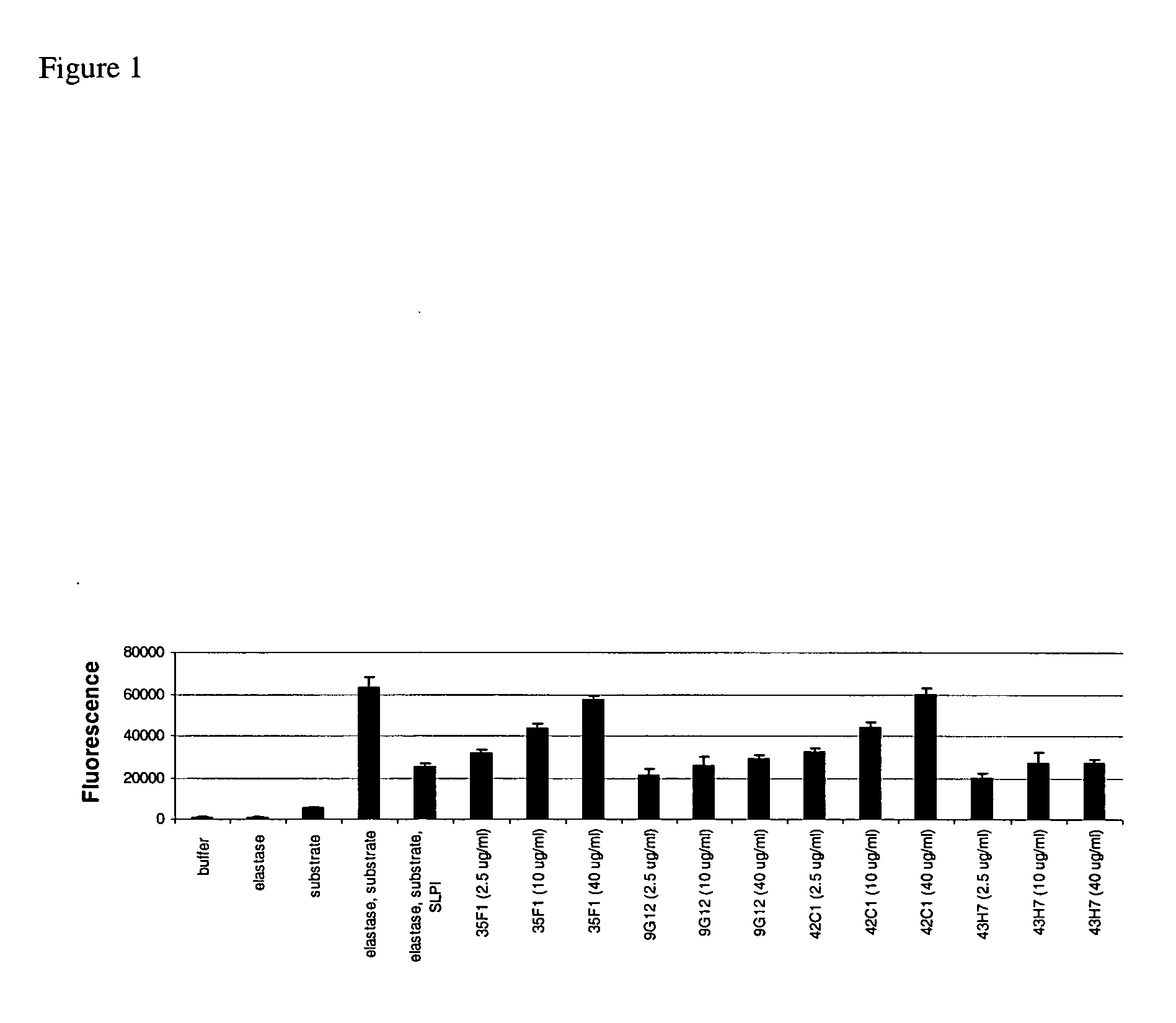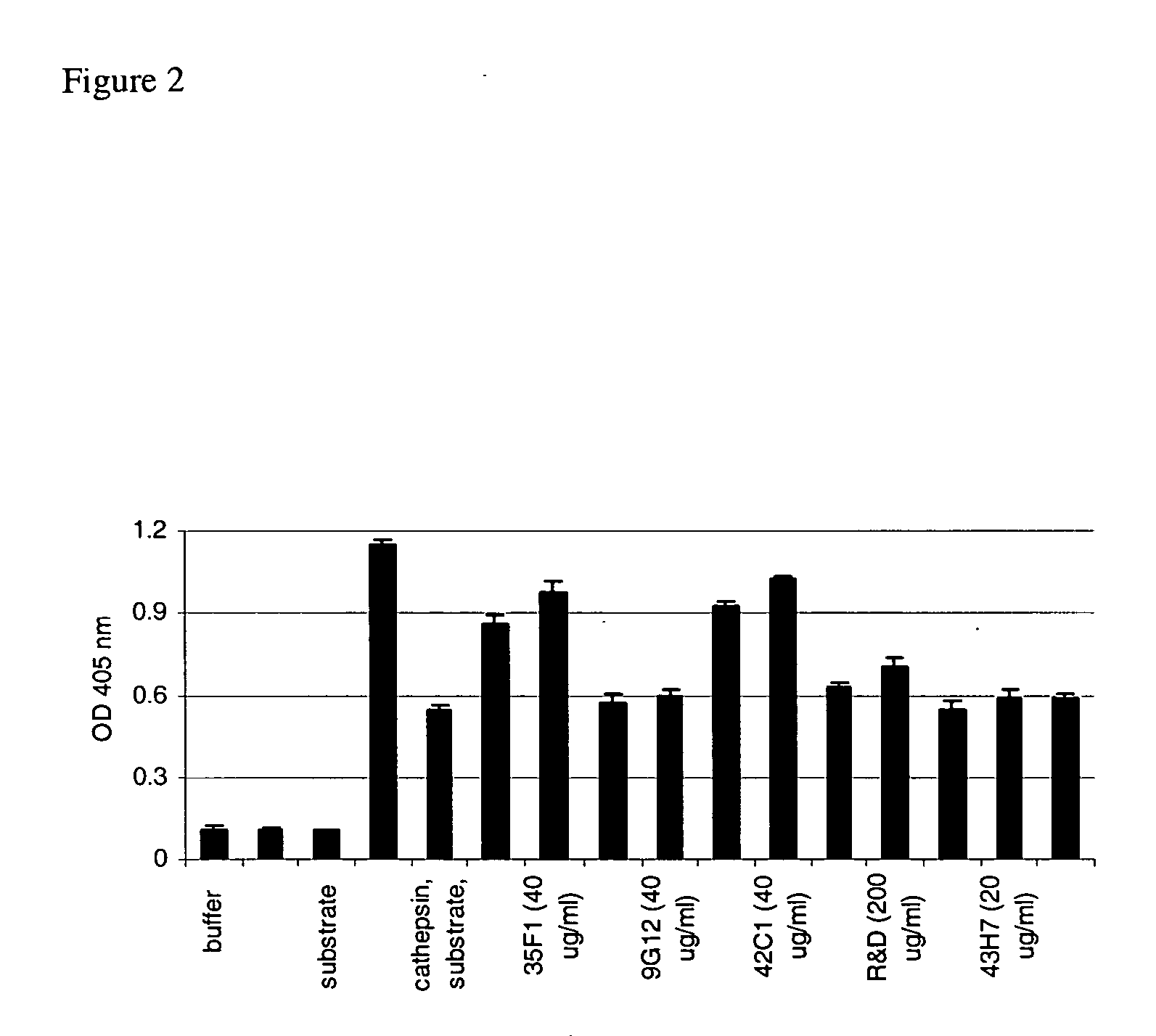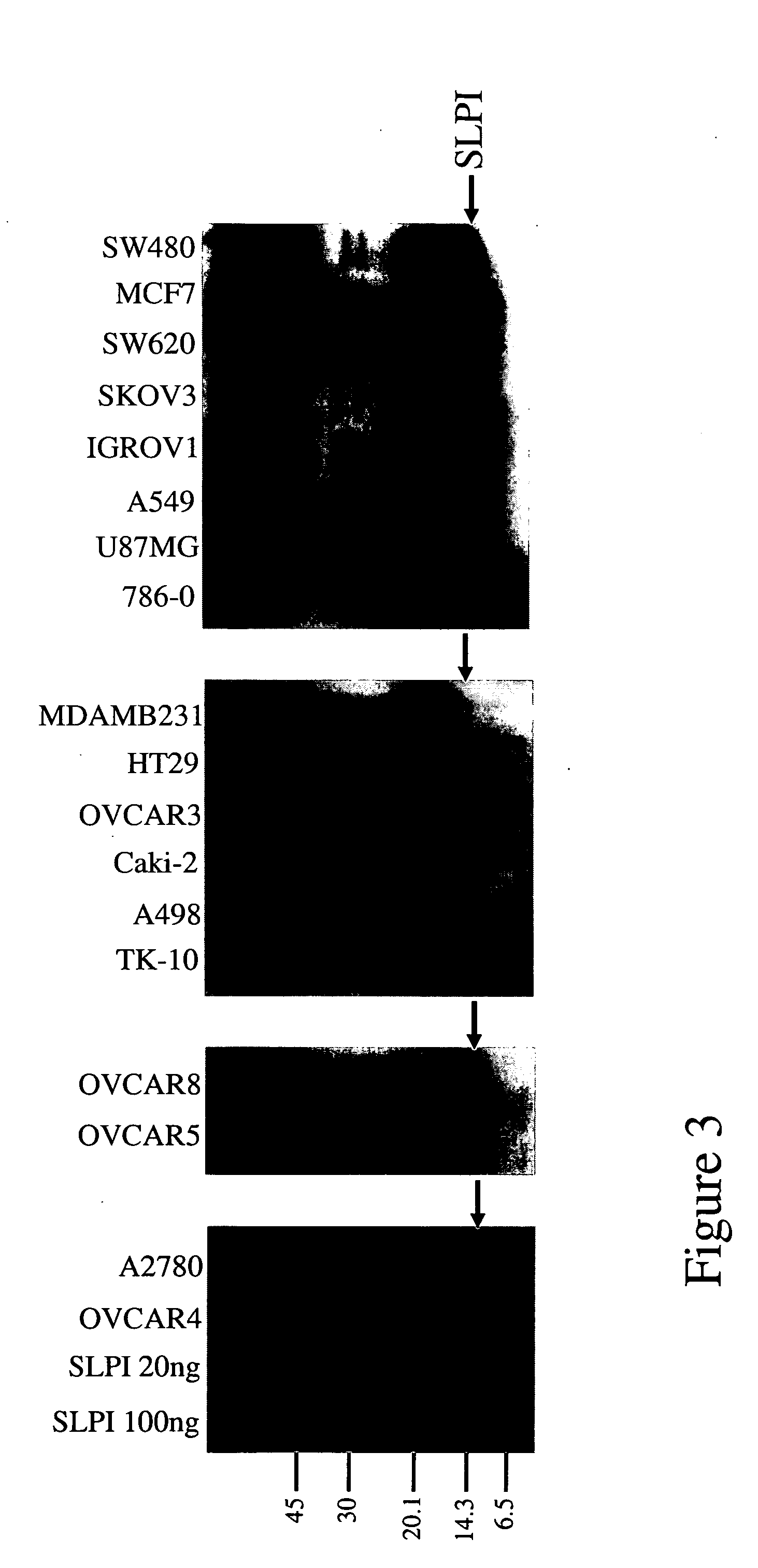Antibodies against secretoryleukocyte protease inhibitor
- Summary
- Abstract
- Description
- Claims
- Application Information
AI Technical Summary
Problems solved by technology
Method used
Image
Examples
example 1
Generation of Human Antibodies
[0108] A preferred method for generating fully human antibodies uses XenoMouse® strains of mice which have been engineered to contain 245 kb and 190 kb-sized germline configuration fragments of the human heavy chain locus and kappa light chain locus (Green et al. 1994 Nature Genetics 7:13-21; Mendez et al. 1997 Nature Genetics 15:146-156; Green and Jakobovits, 1998 J. Exp. Med. 188:483-495; U.S. Pat. Nos. 6,162,963, 6,150,584, 6,114,598, 6,075,181, and 5,939,598.) In an alternative approach, the minilocus approach, an exogenous Ig locus is mimicked through the inclusion of pieces (individual genes) from the Ig locus. Thus, one or more VH genes, one or more DH genes, one or more JH genes, a mu constant region, and a second constant region (preferably a gamma constant region) are formed into a construct for insertion into an animal (Taylor et al., 1992, Chen et al., 1993, Tuaillon et al., 1993, Choi et al., 1993, Lonberg et al., (1994), Taylor et al., (1...
example 2
Immunization and Selection of Animals
[0109] Monoclonal antibodies specific for SLPI were developed by sequentially immunizing XenoMouse® mice (XenoMouse® strains XMG2, Abgenix, Inc. Fremont, Calif.) according to the schedule shown in Table 3 with recombinant human SLPI (R&D Systems, Minneapolis, Minn., Cat#260-PI). For instance, the initial immunization was with 10 μg antigen admixed 1:1 v / v with TiterMax® Gold. Subsequent boosts were made with 10 μg antigen admixed 1:1 v / v with 100 μg alum gel in pyrogen-free D-PBS and sometimes with 50% TiterMax® Gold, and then a final boost of 10 μg antigen in PBS. In particular, each mouse was immunized in the footpad by subcutaneous injection. The animals were immunized on days 0, 3, 8, 13, 17, 18, 21, 24, and 27. The animals were bled on days 16 and 23 to obtain sera for determining anti-SLPI titers.
TABLE 3Immunization schedule for generating antibodies to SLPIAntigen: Recombinant Human SLPI, Cat#260-PI (R&D Systems)1stTar-Mode#Anti-injec-2...
example 3
XenoMax® Antibody Generation
Culture and Selection of B Cells:
[0111] B cells from the harvested animals were cultured and those secreting SLPI-specific antibodies were isolated as described previously (Babcook et al., 1996 Proc. Natl. Acad. Sci. USA, 93:7843-7848). ELISA, performed as described above, was used to identify primary SLPI-specific wells from fifty plates cultured at 500 or 150 cells / well. 55 wells (OD≧0.3) showed ODs significantly above background (0.1), as shown in Table 5.
TABLE 5Selection of B cells specific for SLPIPlateWellsPositives above cutoff OD of:BreakdownScreened0.10.20.30.40.50.60.70.80.91.01.52.0500 cells / well24002314524381676544311(plates #1-25)150 cells / well24002126257171287664432(plates #26-50)
[0112] These data indicated a very low frequency of wells and indicated that the wells were monoclonal for antigen-specificity at all cell dilutions. As shown in Table 6, These 55 positive wells were rescreened for binding to SLPI and only 33 wells were found t...
PUM
| Property | Measurement | Unit |
|---|---|---|
| Composition | aaaaa | aaaaa |
Abstract
Description
Claims
Application Information
 Login to View More
Login to View More - R&D
- Intellectual Property
- Life Sciences
- Materials
- Tech Scout
- Unparalleled Data Quality
- Higher Quality Content
- 60% Fewer Hallucinations
Browse by: Latest US Patents, China's latest patents, Technical Efficacy Thesaurus, Application Domain, Technology Topic, Popular Technical Reports.
© 2025 PatSnap. All rights reserved.Legal|Privacy policy|Modern Slavery Act Transparency Statement|Sitemap|About US| Contact US: help@patsnap.com



